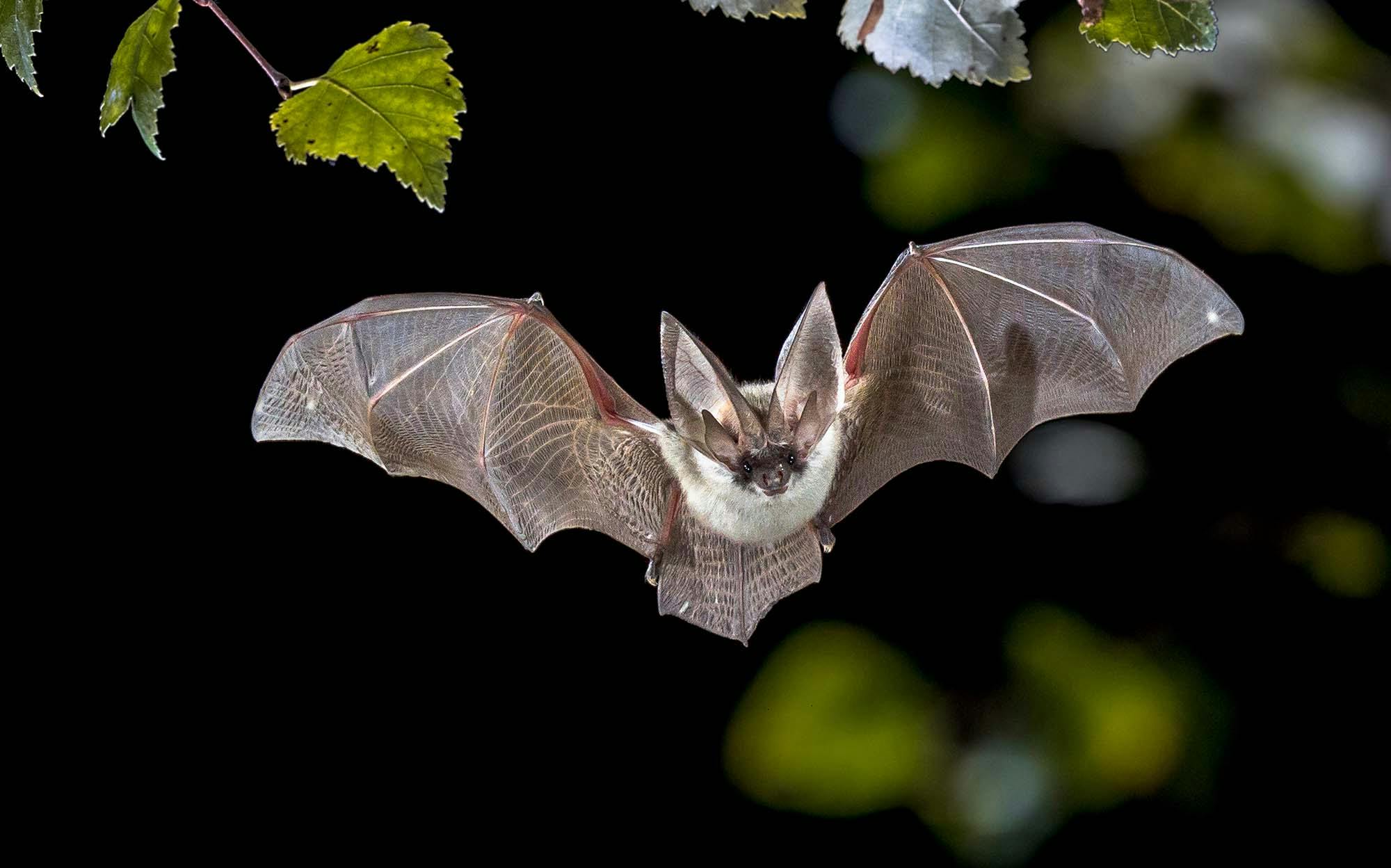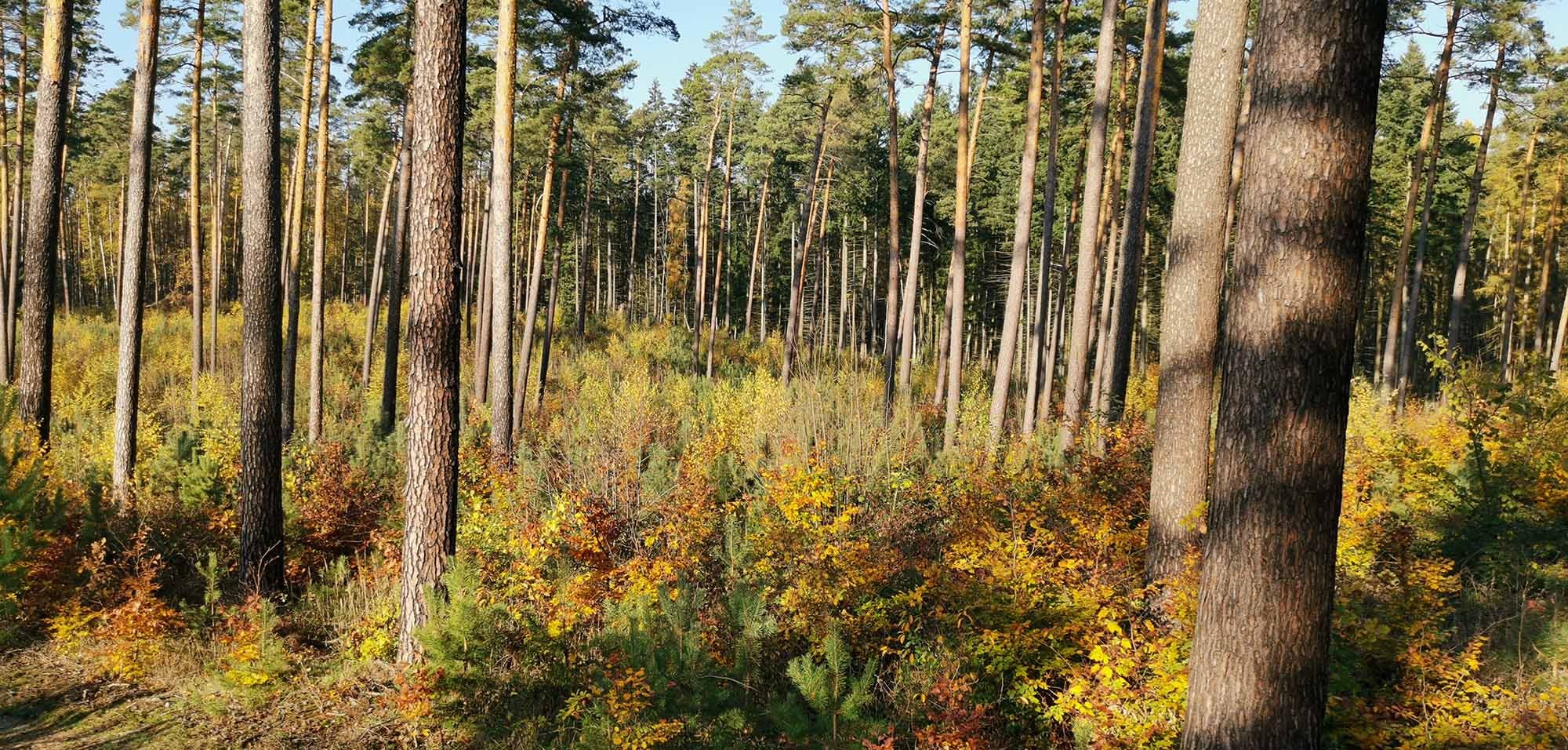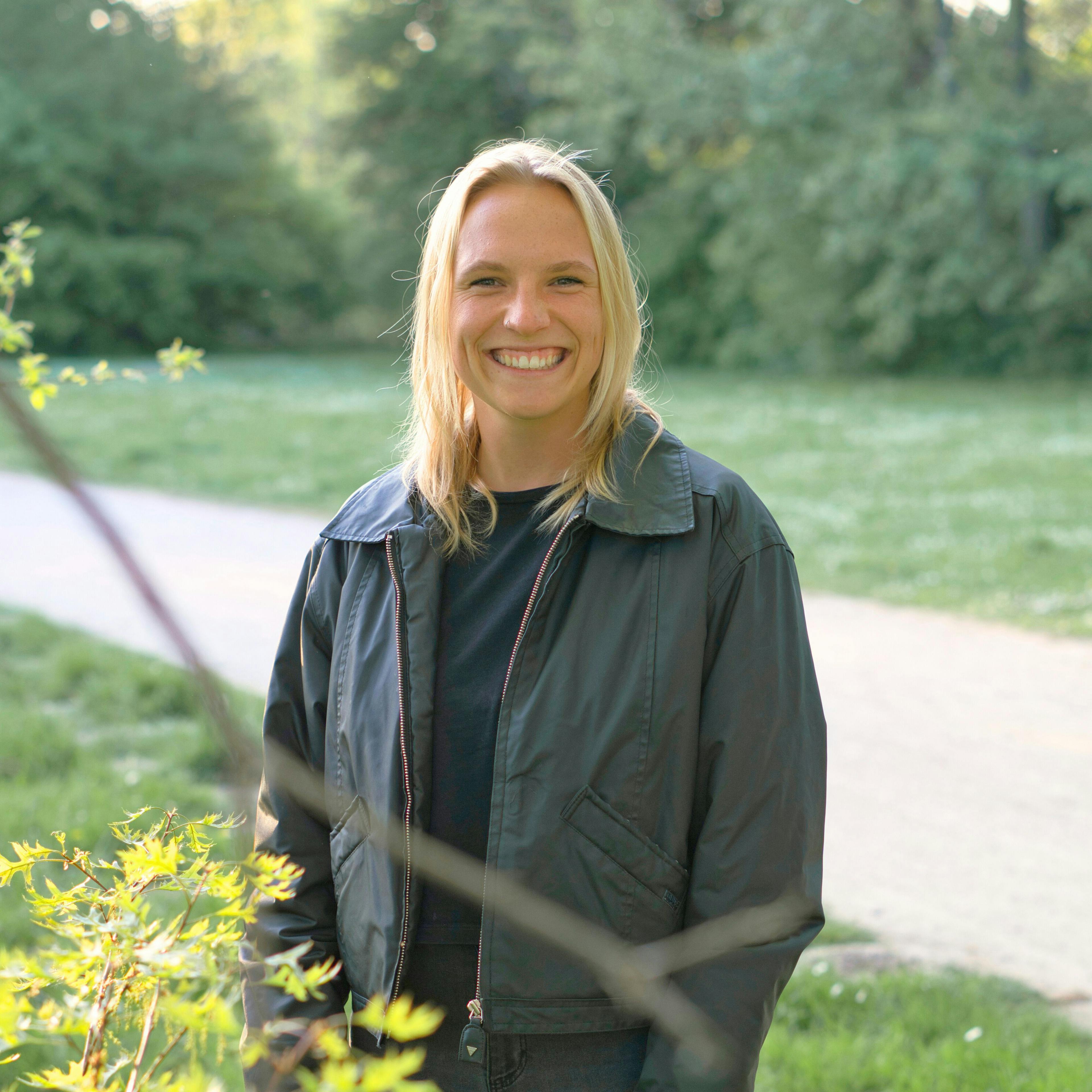We're happy to announce that we've raised €10M in Series A funding to boost AI-powered climate projects in European forests. Learn more here. 🌳

Zehrensdorfer Forest in Raben, Brandenburg
British Columbia in the Heart of Brandenburg: Charting New Paths for a Future-Proof Forest
Located in the heart of the Naturpark Hoher Flaeming, the climate protection project "Zehrensdorfer Forest" is nestled among rolling hills and close to the medieval Rabenstein Castle. Through the project, the pine-dominated forest is being transformed into a climate-resilient mixed forest. This transformation aims to enhance the forest's resilience and biodiversity. Furthermore, Zehrensdorf will sequester an additional 2,173 tons of CO2 annually in the future.
The challenge:
✔️ Optimize CO2 storage
✔️ Increase biodiversity
✔️ Securing local jobs
If you walk through the Zehrensdorf forest on a warm summer's day, you can smell citrus and orange notes in some corners. They come from the Douglas firs, Colorado firs and large coastal firs that were planted here in the last century - presumably without the knowledge of the GDR leadership, which managed all the forests at the time. It was probably very fortunate that the forester of the Zehrensdorf Forest at the time lived directly on site in one of the forester's houses, which still exist today, and experimented on his own doorstep. Back then, the focus was usually on fast-growing tree species, which also led to the predominance of pine trees in Zehrensdorf. Nevertheless, walkers can now enjoy a small area of conifers, which are normally native to British Columbia in western Canada.
Today, 50 years later, forester Christian Stuhlmann can confirm that the experiment was a success: the trees are also coping well with the changed climate in this country. Perhaps even better than many native tree species. "We have completely lost the spruce. It has always been a bit difficult for them here, but the rising temperatures in summer and the low rainfall during the growing season have weakened them so much that pests such as the bark beetle have had an easy time of it," says Stuhlmann. The Weymouth pine and in some cases even the oak have also died as a result of climate change. "In the last 10 years, the climate has gone out of control. This can be seen very clearly in the forests." Droughts, forest fires, hurricane-like storms and pests are presenting forestry operations with ever greater challenges. Forests need to be adapted to the new conditions as quickly as possible.

Monocultural forests are particularly at risk from climate change. (Photo: Christian Stuhlmann)
"Livelihoods will depend on how the climate changes."
It is not just that individual tree species are no longer equipped for today's climate. Large-scale monocultures, as are often found in German forests, are particularly susceptible to pests and extreme weather events.
This is a consequence of forest dieback that we are experiencing first-hand: As we lose more and more forest, peak temperatures in summer increase and weather extremes become more frequent. This is because precipitation only occurs when there is evaporation. Trees release water into the atmosphere; clouds form, which ultimately release the water in the form of rain. Stuhlmann regularly welcomes visitors from Berlin and the surrounding area on forest excursions: "I always tell people: 'Make sure it stays densely forested around the city. It makes a difference whether it's 40 or 44 degrees in summer in the future."
How the climate protection project is supported by OCELL:
To make his "favorite forest" in Raben climate-resilient and optimize ecosystem services, Stuhlmann relies on improved forest management, in which OCELL's Dynamic Forest software supports him, and mixes the existing forest with non-native tree species, among other things.
"Biodiversity is the key to what comes next."
"Our forests are very fragile, unstable and high-risk at the moment," says Christian Stuhlmann, emphasizing how important it is to restore balance. And so he is now continuing measures that one of his predecessors introduced on a small scale on a large scale and planting North American trees such as Douglas firs, large coastal firs and red oaks. He is also focusing on native deciduous trees such as oak, hornbeam and maple, as well as sweet chestnut and hazel. "It's like the stock market. I don't just bet on one stock," explains Stuhlmann. It has been scientifically proven that mixed forest areas mutually block certain pathogens, i.e. pests do not spread in one tree species if there is another tree species next to it. But it's not just the trees that benefit from the diversity: deer, wild boar, lizards, snakes, white-tailed eagles, black storks and countless species of bat, which feel at home in the old deciduous trees, are at home in the Zehrensdorf forest.

Zehrensdorf Forest is home to countless bats. (Photo: CreativeNature)
It is important to Stuhlmann to promote the natural processes of the forest. For example, he loosens the forest floor - in forestry jargon this is called soil wounding, so that falling birch or acorn seeds can germinate and reproduce themselves. But this is by no means the end of the story. The areas need to be maintained: Mowing grass, erecting fences to protect against game, putting up perching crutches for birds of prey to hunt mice that would otherwise harm young trees in large numbers. The forest is a complex ecosystem that Stuhlmann manages very carefully and in a natural way. The wood is an important, renewable raw material for sustainable living and building and thus stores the bound carbon for decades. In the forest itself, 65,195 tons of additional CO2 can be stored over an area of more than 1,043 hectares over the next 30 years through measures to improve forest management. This corresponds to the average annual CO2 consumption of 6,209 people in Germany.

Forester Christian Stuhlmann mixes these pines with other tree species to make the Zehrensdorf forest more climate-resilient. (Photo: Christian Stuhlmann)
Christian Stuhlmann wants to make the forest future-proof with his near-natural forestry. Part of the forester's job is to plan for the long term. "I think in 100 years, even though I won't have any of it myself." However, those who are already benefiting from Stuhlmann's careful and sustainable work today are the local companies he works with to manage the forest. The rural region is heavily dependent on forestry. The Zehrensdorf forest therefore creates important jobs and strengthens the economy.

The forester:
Christian Stuhlmann studied in Dresden, one of the most traditional locations for forestry sciences in the world. He came to his profession by chance through playing the hunting horn and got to know young foresters from the region. His enthusiasm for this creative profession, which allows him to help shape the future, was born. Today, Stuhlmann is responsible for various forests in Brandenburg as a self-employed forestry expert, always accompanied by his Dachsbracke Greta, and sees himself as a driver of innovation and digitalization in the forest. The fact that Stuhlmann likes to break new ground is demonstrated, among other things, by the fact that he was one of the first foresters to set up CO2 projects together with the Waldklimastandard.
Learn more about this climate protection project here.
This project contributes to the following United Nations Sustainable Development Goals:

